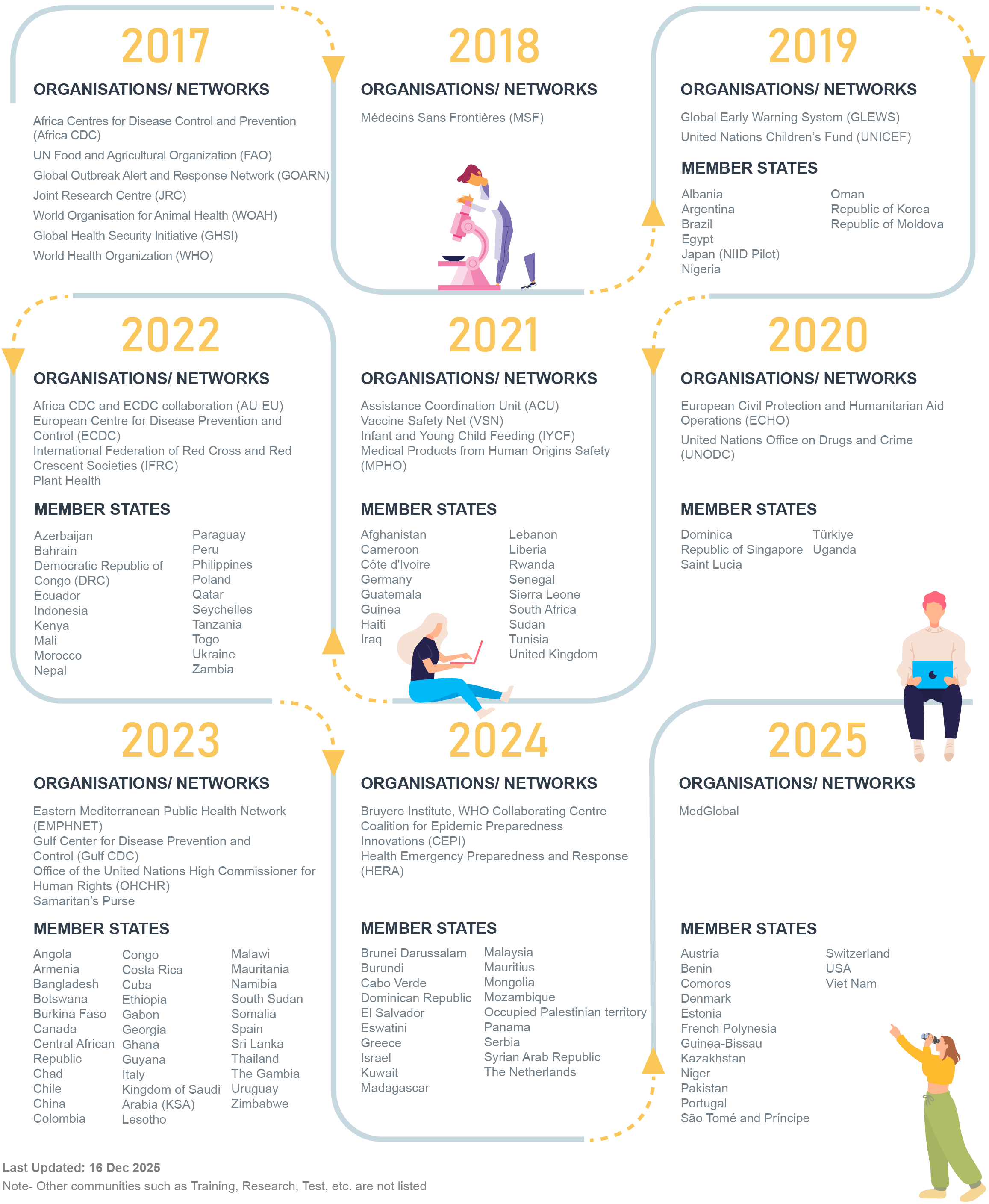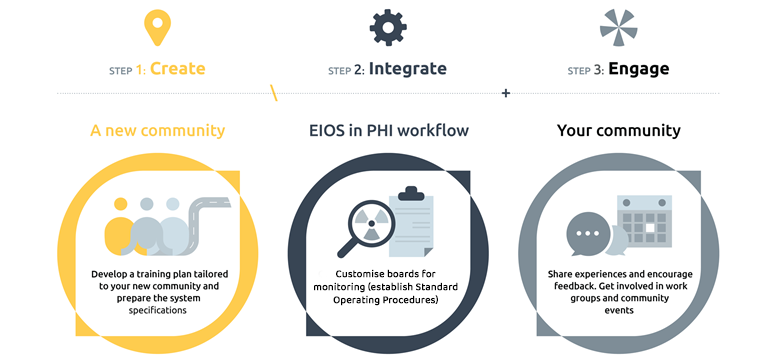
Community of Practice
Community of practice
At the heart of the initiative is the EIOS community: sub-national to international governmental and non governmental organisations working to prepare for and respond to health threats. With an all-hazards approach incorporating One Health principles, the EIOS community of practice collaborates across sectors and disciplines to build and strengthen global health security. This includes defining standards, harmonising activities and building competencies, capacity and enabling tools. Coming together as one community, pooling our resources, learning from each other’s successes and failures and collaboratively building on our strengths will be key to detecting health threats as early as possible and reduce or prevent their impact.
Communities timeline

.jpg?sfvrsn=f8f1adc1_8)
.png?sfvrsn=51e19c58_4)
How do new entities become part of the EIOS community?
Interested sub-national and national authorities should connect with the EIOS initiative through their respective WHO country or regional office, whereas regional, supranational and international organisations can connect with any level of WHO, including the EIOS Core Team at WHO headquarters.
EIOS implementation

